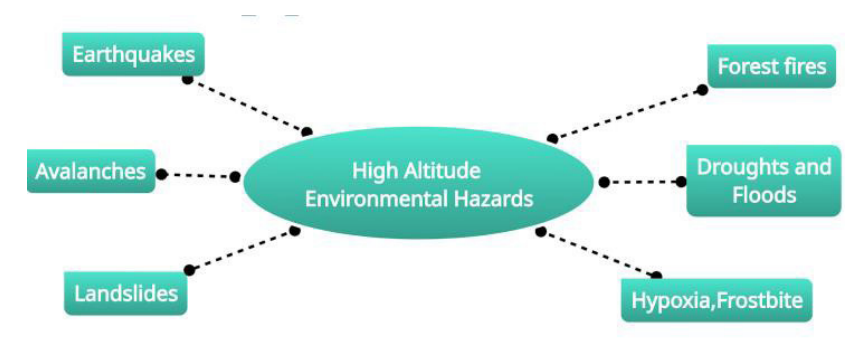
High-altitude environments present a unique set of environmental hazards that can significantly impact both human health and the ecosystem. As altitude increases, atmospheric pressure decreases, leading to lower oxygen levels, extreme temperatures, and intensified solar radiation. These factors pose challenges for individuals and ecosystems adapted to lower elevations. High-altitude regions typically found above 2,500 meters (8,200 feet), are characterized by reduced air pressure and oxygen availability, making them susceptible to a range of hazards. Examples of such hazards include altitude sickness, hypoxia, extreme cold, intense UV radiation, and altered precipitation patterns. Understanding and mitigating these environmental challenges are crucial for the well-being of both the residents and the fragile ecosystems that inhabit these lofty landscapes.
Contents
Answer
High-altitude environments present several environmental hazards due to fragile ecosystems, harsh environmental conditions, exacerbated by increasing human footprints. Some of the primary high-altitude environmental hazards include:


High Altitude Environmental Hazards
- Earthquakes
- Earthquakes are common at high altitude environment,fragile mountainous ecosystem,susceptibility increased by unsustainable anthropogenic activities like illegal constructions in ecologically vulnerable areas
- Eg.Nepal Earthquake 2015,Haiti Earthquake 2010,Sichuan Earthquake 2008
- Avalanches
- Common in high altitude regions particularly mountainous regions with heavy snowfall eg.Everest region (Nepal),Swiss Alps,Himalayas
- Climate change induced high temperature is increasing the frequency and likelihood of avalanches
- Landslides
- Due to fragility of high altitude ecosystems they are prone to landslides,cause huge destruction of life and property
- Eg.Kedarnath landslide 2013,Langtang Landslide(Nepal) 2015,landslides in peruvian Andes
- Forest fires
- With increased average temperature and low precipitation events,mountain vegetation is being exposed to frequent fire events,human induced activities increase their magnitude and frequency. Eg.2013 Rim Fire in California impacted the Sierra Nevada region.
- Drought and Floods
- Rainfall is the major source of irrigation in high altitude areas, changing precipitation patterns affecting the agricultural potential and food security of these regions. Eg.Kedarnath floods 2013
- Hypoxia and Frostbite
- In high altitude regions air pressure and oxygen levels decline causing conditions of hypoxia also known as altitude sickness
- Extreme low temperatures of high altitude cause injury to the tissues called frostbite
Understanding the fragility is crucial in mitigating the impact of high altitude hazards, Integrated Himalayan Development Program, National Mission on Himalayan Studies, National Mission for Sustaining the Himalayan Ecosystem are a step in the right direction.
In case you still have your doubts, contact us on 9811333901.
For UPSC Prelims Resources, Click here
For Daily Updates and Study Material:
Join our Telegram Channel – Edukemy for IAS
- 1. Learn through Videos – here
- 2. Be Exam Ready by Practicing Daily MCQs – here
- 3. Daily Newsletter – Get all your Current Affairs Covered – here
- 4. Mains Answer Writing Practice – here

